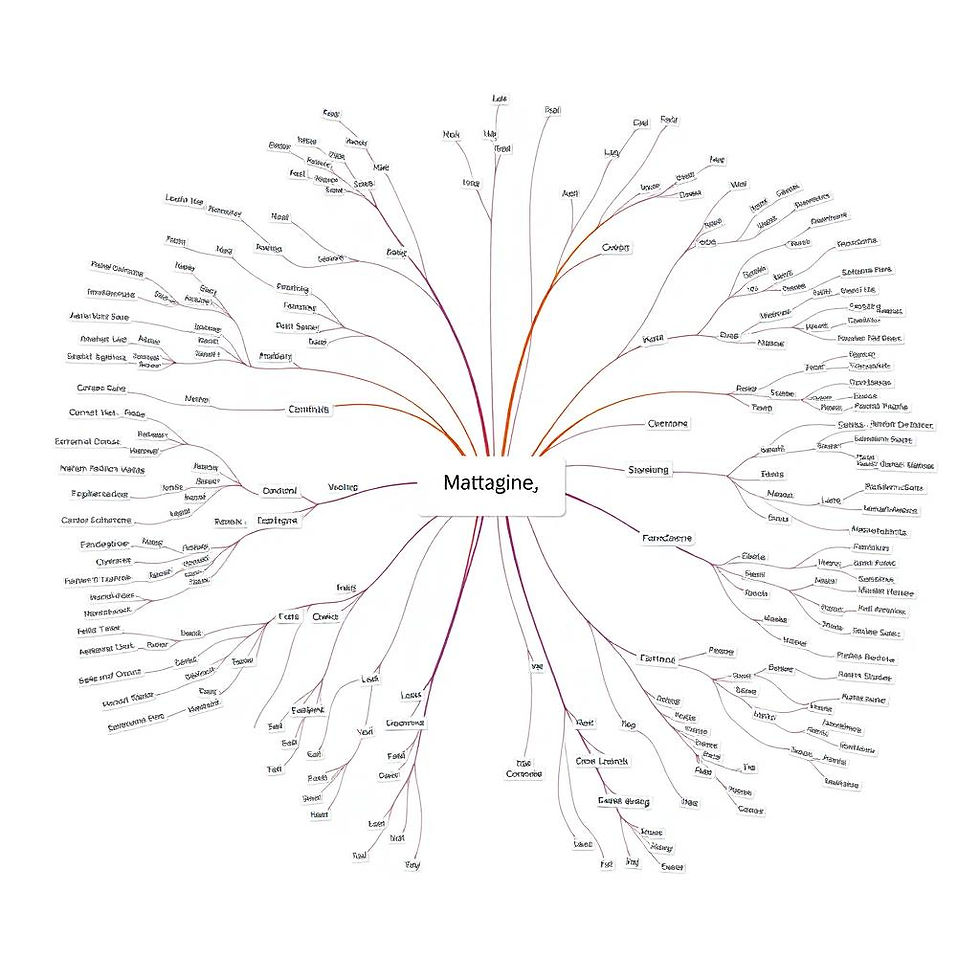Mapping Session #1: Relational Weaving Practices
- Alejandro Zuluaga
- Apr 20
- 2 min read
Dear Human,
We will beginning soon our journey together with our first session focusing on mapping your Relational Weaving Practice. As it is our initial meeting, the session will last approximately 60 to 75 minutes.
To prepare for this session, please bring the following materials:
2-3 large sheets of paper (or poster paper)
2-3 regular-sized sheets of paper
A journal
Various supplies for writing, drawing, and coloring (markers, colored pencils, etc.)

If possible, please include a color palette with 12 pencils or more. The large sheets don’t need to be as big as shown in the picture; having sheets at least half that size would be helpful. However, if you cannot obtain large sheets, regular-sized printer paper will also work; we can combine multiple sheets for our mappings that extend beyond the margins.
Also make sure you have space to be able to map, place your computer screen somewhere comfortable either besides or behind your mapping area where you have enough space to comfortably draw, doodle and write while being in a conversational process through the screen.
This is an example I found online to give you an idea of what your mappings
could potentially look like:

Just remember that there is no wrong way of engaging with the process as it is intuitive, following impulse, and designed to serve you with meaningful insights.
Looking forward to this journey with you, also if you have time read below a bit of a conceptual framework for mapping and navigation.
A Note about Mapping & Navigation
This refers to the process of exploring, understanding, and actively engaging with one’s internal emotional and psychological terrain. This concept involves creating a detailed representation of an individual's experiences, feelings, thoughts, and patterns, enabling them to navigate their personal growth and development.
Key Components:
Mapping:
Self-Assessment: Personal landscape mapping begins with self-reflection and assessment. Individuals identify and articulate their emotional, mental, and behavioral patterns, as well as their strengths and challenges.
Visual Representation: This may involve creating diagrams, charts, or written descriptions that map out various aspects of one’s internal landscape, such as emotions, relationships, beliefs, and significant life events.
Navigation:
Exploration: Navigation involves actively engaging with the mapped landscape, exploring different areas of one’s emotional and psychological life. This may include recognizing uncharted territories representing suppressed feelings or untapped potential.
Goal Setting: Individuals can use their mapped insights to set personal goals and navigate their paths toward growth, healing, or deeper self-understanding.
Adjustment and Adaptation: As individuals encounter challenges or new experiences, they can revisit and update their maps. This dynamic process may involve reassessing emotional responses, beliefs, and coping mechanisms in light of new insights.
The purpose of mapping and navigation is to foster greater self-awareness, emotional intelligence, and intentionality in personal development. By understanding our internal landscapes, individuals can make informed choices, navigate life’s challenges more effectively, and cultivate a deeper sense of authenticity and fulfillment.
Again, looking forward to this journey with you,
Sincerely & With Love
Ale